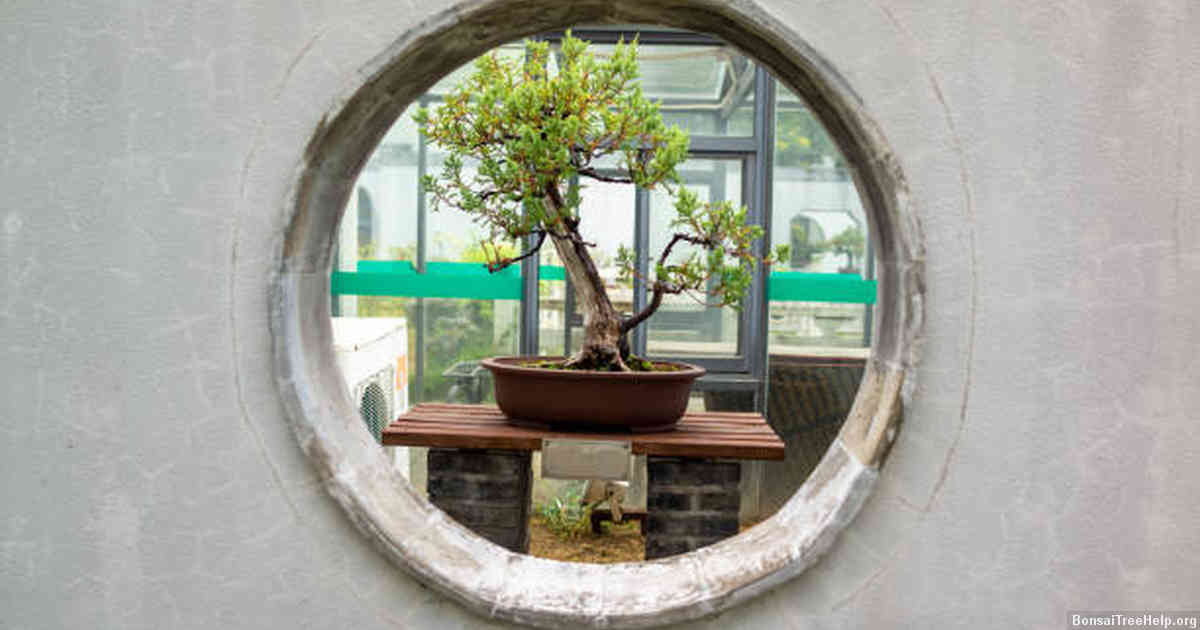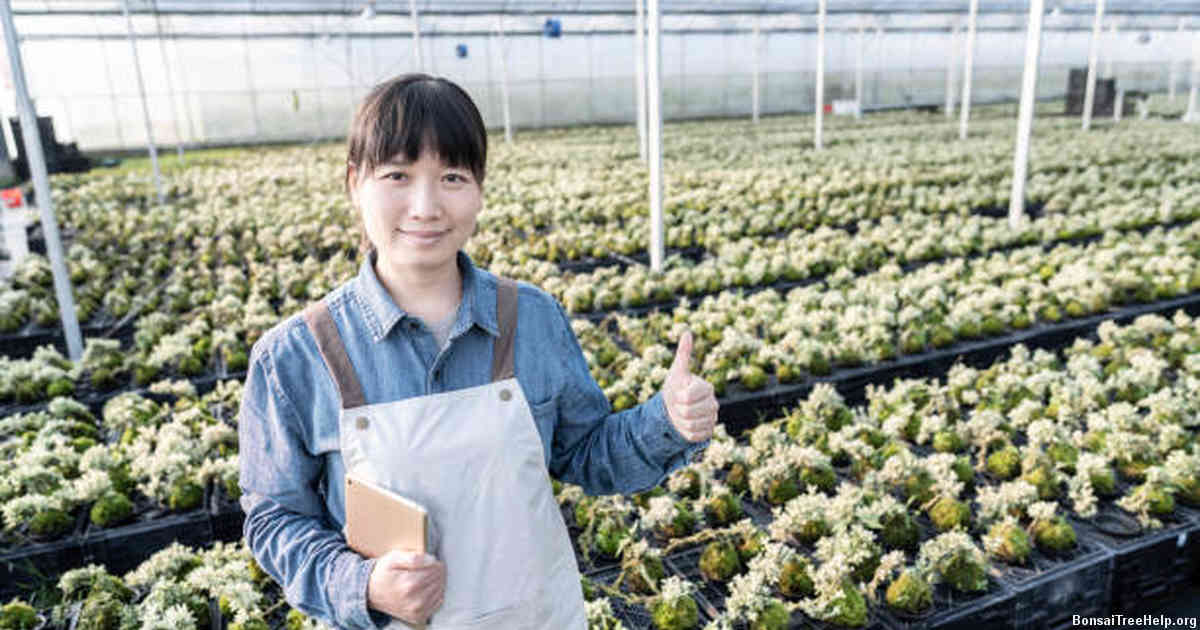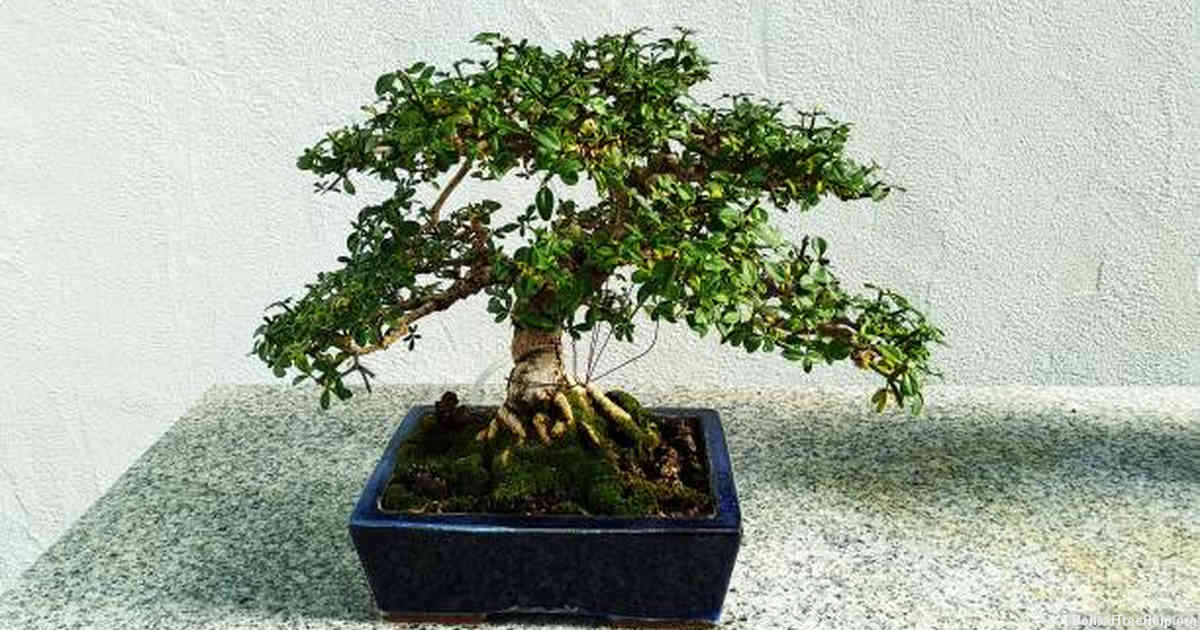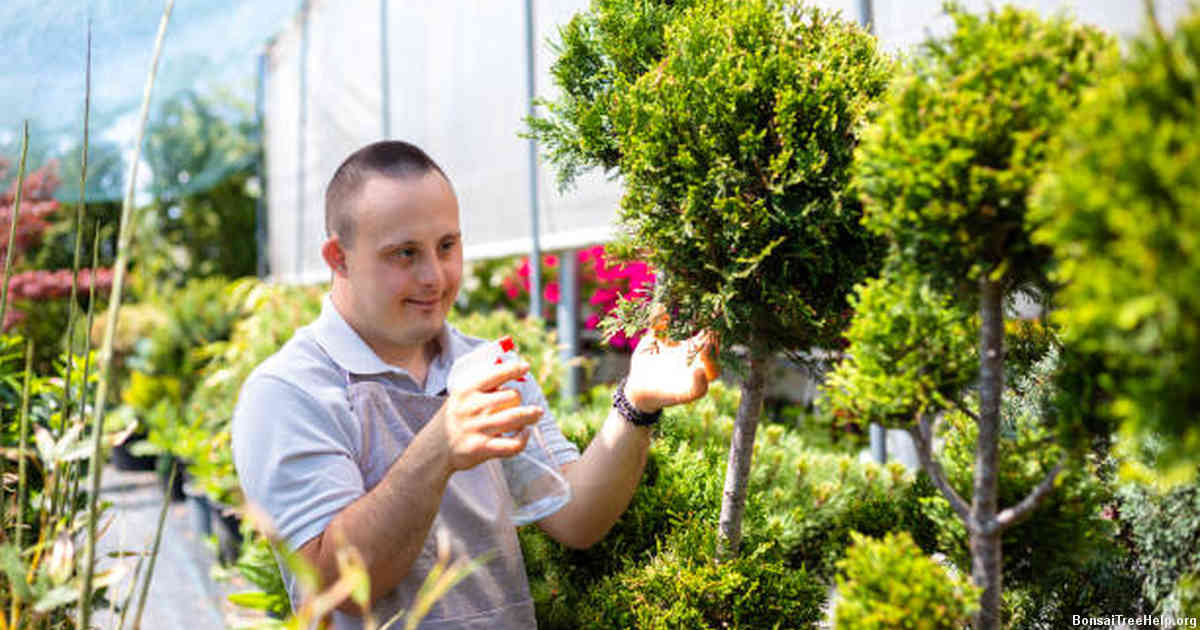
To grow a Sequoia Bonsai, you will need to provide it with adequate light and humidity. Place the tree in an area that receives full or partial sun for at least five hours per day. Water the bonsai when the top layer of soil is dry, using lukewarm water. Fertilize every two weeks during periods of growth with a balanced fertilizer diluted at half strength; reduce fertilization frequency during winter months. Prune branches as needed to maintain desired shape, snipping from just above a node or leaf bud. Wiring can also be used to shape the trunk and larger branches if needed. Repotting should take place every 2-3 years using a fast draining soil mix designed specifically for bonsai cultivation.
Contents:
- Choosing the Right Sequoia Species for Bonsai
- Preparing the Soil and Container for Your Sequoia Bonsai
- Watering and Fertilizing Techniques for a Healthy Sequoia Bonsai
- Pruning and Shaping Your Sequoia Bonsai
- Training Your Sequoia Bonsai to Branch Out and Develop a Balanced Look
- Protecting Your Sequoia Bonsai from Pests and Diseases
- Special Considerations for Growing Outdoor vs. Indoor Sequoia Bonsai
Choosing the Right Sequoia Species for Bonsai

When deciding on which species of Sequoia tree to use for bonsai, you must take into consideration several key factors. And most importantly, the size of the tree needs to be taken into account. The Giant Sequoia (Sequoiadendron giganteum) is likely too big and may be difficult to prune effectively as a bonsai specimen; however, smaller varieties like the Dwarf Sequoia (Sequoiadendron sempervirens) can prove much more suitable.
Another factor you should consider when selecting your Sequoia species is its climate preference. Whilst both species mentioned above are widely regarded as being hardy, each has differing tolerances in terms of temperature and rainfall requirements. For example, Giant Sequoias prefer warm climates with high humidity levels whereas Dwarf Sequoias can tolerate hotter temperatures but require less water than their larger counterparts.
The final aspect to bear in mind when choosing a sequioa for your bonsai project is ease of growth from cuttings or seedlings – some trees grow better from one method than others so this will greatly influence how easy it is for you to cultivate your desired specimen.
Preparing the Soil and Container for Your Sequoia Bonsai

Sequoia bonsais are prized for their majestic shape and size, making them a great choice for any aspiring bonsai gardener. Preparing the soil and container correctly is essential to the success of your bonsai tree’s growth. A successful sequoia bonsai must have adequate drainage, so it is important to select a pot that has large drain holes and well-draining soil. Choose an unglazed ceramic pot as they provide better ventilation than plastic pots do. When adding soil, make sure to use a combination of organic matter such as bark chips, moss or composted leaves mixed with inorganic materials like pumice or lava rock to ensure proper air circulation within the root system.
It is also important to feed your sequoia regularly in order for it to grow healthy and strong branches. Look for a fertilizer mix specifically tailored for conifers – these will be high in nitrogen and low in phosphorus – however pay attention to the NPK ratio on the package label since this will tell you exactly how much nitrogen (N), phosphorus (P) and potassium (K) are present in each bag of fertilizer. Water your sequoia correctly by only watering when the top two inches of soil has dried out; but never leave it completely dry as drought can lead your tree into shock and kill it.
Watering and Fertilizing Techniques for a Healthy Sequoia Bonsai

As you begin to nurture your sequoia bonsai, it is important to understand the watering and fertilizing techniques necessary to keep your tree healthy. To water properly, you should aim for a deep soak every three or four days during hot weather, but allowing the soil to dry slightly before each new watering session. During milder seasons like spring and fall, let the top inch of the soil dry out before adding moisture again. When pouring water on your bonsai be sure not to leave any standing water in its saucer as this can cause root rot and other problems for your plant.
It is also beneficial for a sequoia bonsai’s health if you fertilize every two weeks during its active growing season from early April through late September. Start with an organic fertilizer that has been specifically formulated for conifers like sequoias, then increase to a balanced fertilizer with higher levels of phosphorus once buds form on its branches; applying less often in cooler temperatures. Always use about half of what is recommended on the container for houseplants when fertilizing since bonsais are smaller than their counterparts planted outdoors.
If certain areas are yellowing or need extra TLC due to pruning or environmental changes then foliar feed with seaweed extract – misting directly onto leaves – to give them an added boost of nutrients throughout the year so they can continue thriving in whatever space they reside in.
Pruning and Shaping Your Sequoia Bonsai

Pruning and shaping are essential elements when crafting a beautiful and impressive sequoia bonsai. A skilled hand with sharp scissors is key to creating the desired shape while at the same time maintaining the tree’s health. When it comes to pruning, it is important to understand that every type of bonsai requires different techniques in order to achieve optimal results. Sequoias are not exempt from this rule; however, they do share some of the similar principles as other types of bonsais.
Generally, it is recommended that pruning for all bonsais be done during early spring – a time for new growth on trees. During this period, branches can be trimmed or removed in order to create an aesthetically pleasing silhouette and help maintain balance in the tree’s shape. It is important to remove branches whose paths will interfere with one another as well as dead or broken limbs. Careful attention should also be taken when removing young shoots in order to ensure proper formation during future growth spurts.
To further refine your sequoia’s appearance, wiring can help create unique shapes by gently twisting and manipulating branches into intricate designs or curves. Due diligence must be practiced when using wires since overworking them may cause irreparable damage such as cutting off circulation causing leaves and buds turning brown before dying off completely. With patience and practice even novice gardeners can sculpt their way towards growing successful sequoia bonsai with attractive features any master gardener would take pride in achieving.
Training Your Sequoia Bonsai to Branch Out and Develop a Balanced Look

Cultivating a bonsai from seed is both an incredibly rewarding and challenging experience. For those looking to cultivate the majestic Sequoia, mastery of bonsai training techniques is necessary in order to achieve the desired shape and character. Pruning and wiring are some of the most important tools available to you when growing a Sequoia bonsai – if used properly, they can help you direct new shoots into their ideal location while also guiding branch growth that will result in a well-balanced tree structure.
One popular technique used with sequoias is pinching back leaves throughout spring and summer. Pinched foliage helps produce lateral buds which then sprout outwards rather than vertically, ensuring robust branching. Over time as this process continues, natural arching starts to develop as branches layer towards the center of the canopy. To ensure even growth on all sides, take care not to excessively prune one side or area too much as it can lead to lopsidedness over time.
When wire wrapping your sequoia’s trunk or branches be sure not to use too strong a gauge as sequoias are known for having thicker bark; thinner gauges should be avoided completely due to their lack of strength for supporting larger branches especially when securing them in place after winding has been completed. Remember: The aim here is not only grow healthy roots but also keep your tree pliable enough so that no permanent damage occurs during training – being patient and gentle goes hand in hand with achieving great results.
Protecting Your Sequoia Bonsai from Pests and Diseases

When dealing with the unique and delicate process of growing a sequoia bonsai, pests and diseases should be a top priority. With trees so small, even the slightest infestation can cause huge amounts of damage in little time. The best way to prevent an invasion is by properly caring for your bonsai. Keep its leaves clean and healthy by trimming away dead or dying foliage, using high-quality soil mix, and providing it with regular doses of fertilizer that are specially formulated for bonsais. Make sure to only use pest control products specifically designed for protecting bonsais; avoid general insecticides as they may end up doing more harm than good.
It’s also important to take proper precautions when bringing new plants into your collection – quarantine any potential newcomers for several weeks before introducing them into the environment. This will allow you to keep an eye out for any signs of infection before exposing other plants to the same risk. Taking note of your plant’s health on a regular basis is also vital in case something does slip through unnoticed; watch out for discoloured leaves or stems, changes in size or shape over time, excessive wilting or drooping, fungal growth etc. As these could all indicate an unwelcome guest lurking inside the potting medium.
Remember that preventive measures alone may not always be enough; consult with a specialist if you notice anything suspicious while examining your tree(s). They might recommend treatments such as copper oxide applications which act both as repellents and fungi killers at the same time; alternatively pruning off affected branches may prove successful in more serious cases (such as Dutch elm disease) where chemical treatments would otherwise be too risky due to their toxicity levels in relation to smaller organisms like insects – after all no one wants their miniaturized forest turning into nothing but petrified trunks.
Special Considerations for Growing Outdoor vs. Indoor Sequoia Bonsai

Growing a sequoia bonsai is no small feat, but the rewards of having such a majestic species are well worth it. Before jumping in, one must decide between raising their sequoia bonsai outdoors or indoors and both come with their advantages and disadvantages.
Outdoor sequoia bonsais benefit from natural light, temperature variations and access to soil; however depending on where you live outdoor conditions may not always be optimal for these larger trees. If you get severe temperatures during winter, pests or disease may become an issue that requires extra protection like burlap wrapping. On the other hand, warmer climates can be too hot for some species which need cooler nights to thrive. Therefore if your climate doesn’t fit what a sequoia needs then keeping them indoors might be best option.
Indoor bonsais also have certain advantages like avoiding extreme temperatures and making sure the tree receives the right amount of water regardless of season. However indoor growing comes with its challenges as well; getting enough light becomes a consideration that could require investing in grow lights especially during shorter days in winter months when natural lighting will decrease significantly indoors as well as outdoors. Potting size must also taken into account so that roots don’t become cramped inside which can lead to root rot quickly if proper drainage isn’t provided for any excess water collection at bottom of pot container.
Leave a Reply